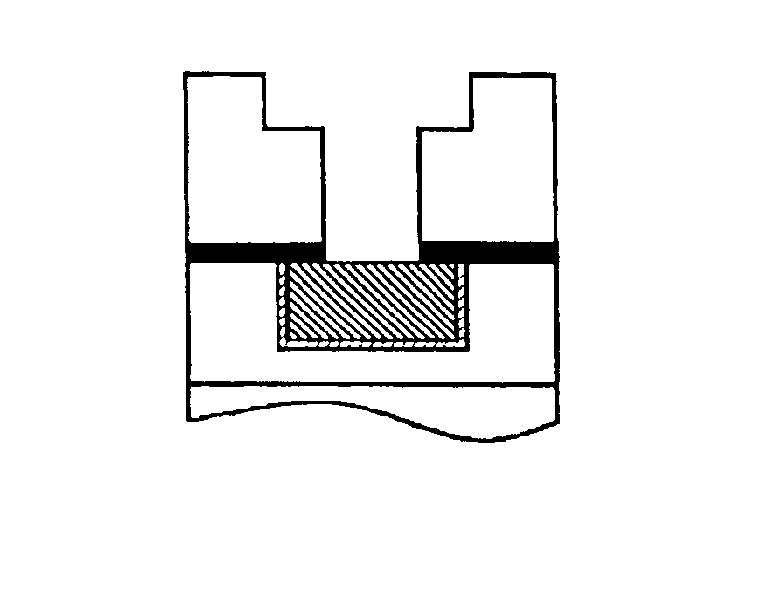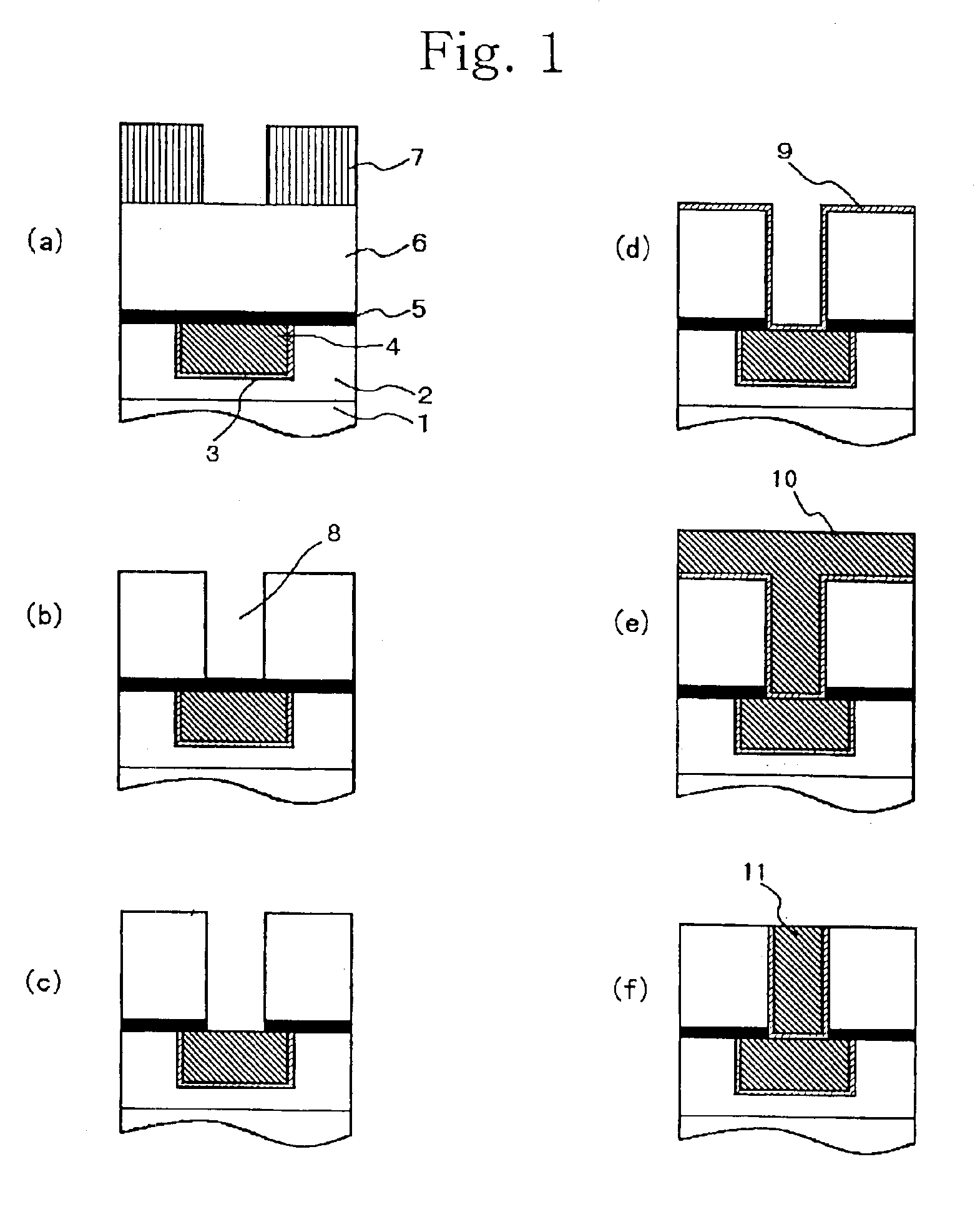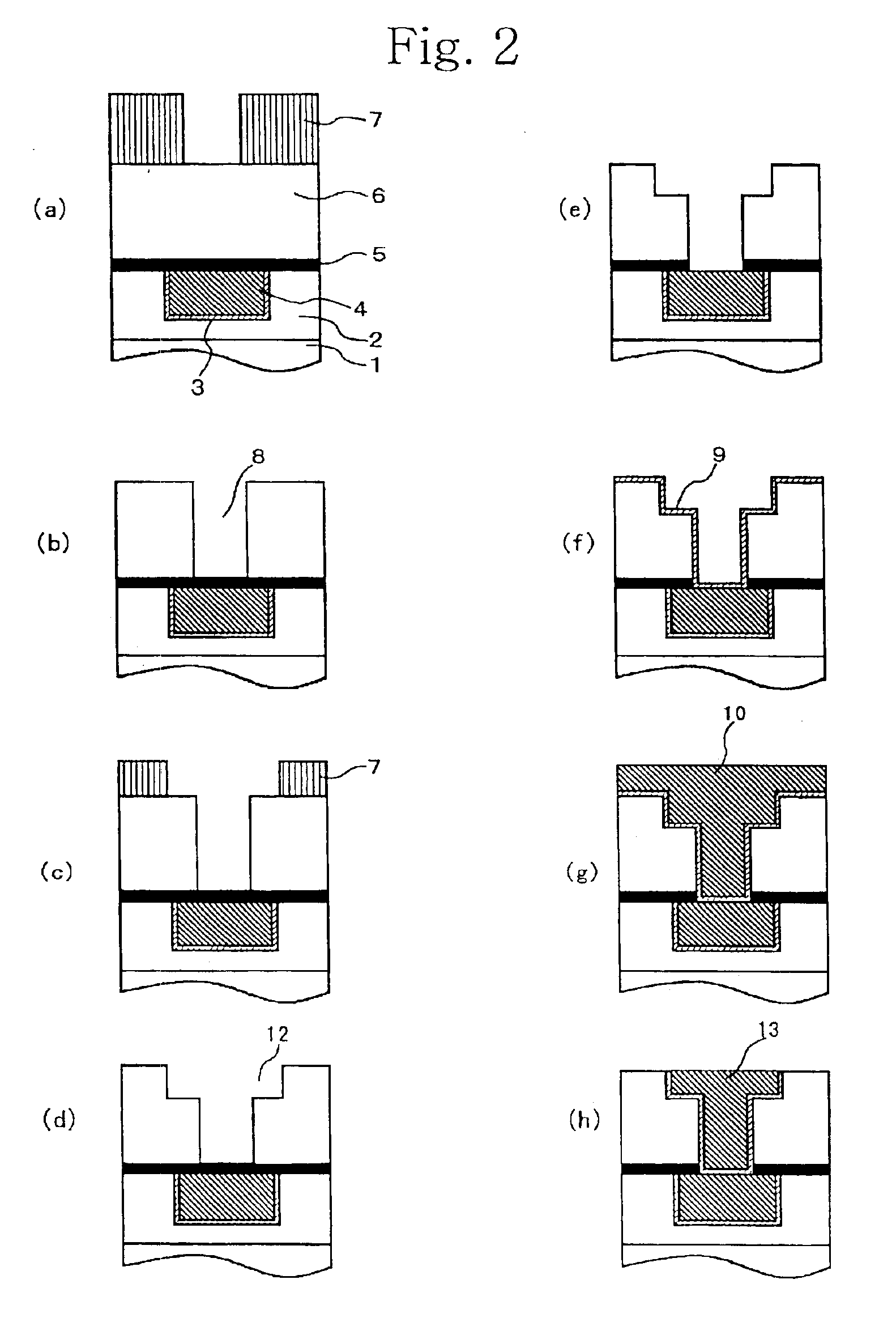Method of etching silicon nitride film and method of producing semiconductor device
a silicon nitride film and etching technology, applied in the field of methods, can solve the problems of insufficient inability to achieve sufficient effect of etching method, and poor electrical conductivity of fluoride, and achieve the effect of suppressing the formation of copper fluorid
- Summary
- Abstract
- Description
- Claims
- Application Information
AI Technical Summary
Benefits of technology
Problems solved by technology
Method used
Image
Examples
example 1
[0048]With reference to the drawing, description will now be made. FIG. 1 is a sectional view showing a process of the so-called single damascene forming method wherein copper is embedded in via holes formed in an inter-layer insulation film. First, as shown in FIG. 1(a), after forming functional elements such as transistors, that are not shown in the drawing, on a semiconductor substrate 1 such as silicon, a silicon oxide film is formed as an inter-layer insulation film 2. After forming interconnect grooves in the inter-layer insulation film 2, a barrier film 3 and a copper film are deposited therein and the surface is smoothed by the CMP polishing process, thereby forming an under-layer copper wiring 4 as a first wiring layer having thickness of 300 nm. A silicon nitride film that serves as an etching stopper film 5 having a thickness of 100 nm is formed on the under-layer copper interconnects 4 by the plasma CVD process, and a silicon nitride film having a thickness of 800 nm is ...
example 2
[0052]The copper plug was formed similarly to Example 1, except for modifying the conditions of removing the stopper film to contain oxygen of Experiment 5 and omitting the oxygen plasma processing after the etching. This resulted in less formation of copper fluoride and fluorocarbon deposit, showing that normal formation of the barrier film and embedding of the copper plugs are possible without applying the oxygen plasma processing.
[0053]Although the silicon oxide film (SiO2) is used as the inter-layer insulation film formed on the semiconductor substrate and on the silicon nitride film in the cases described above, the present invention is not limited to this constitution and any material known in the prior art, that allows the use of silicon nitride film as the etching stopper film, may be used. For example, BPSG (phospho-boro silicate glass), PSG (phospho-silicate glass), BSG (boro-silicate glass) and organic film having a low dielectric constant such as polyimide may be used. I...
PUM
 Login to View More
Login to View More Abstract
Description
Claims
Application Information
 Login to View More
Login to View More - R&D
- Intellectual Property
- Life Sciences
- Materials
- Tech Scout
- Unparalleled Data Quality
- Higher Quality Content
- 60% Fewer Hallucinations
Browse by: Latest US Patents, China's latest patents, Technical Efficacy Thesaurus, Application Domain, Technology Topic, Popular Technical Reports.
© 2025 PatSnap. All rights reserved.Legal|Privacy policy|Modern Slavery Act Transparency Statement|Sitemap|About US| Contact US: help@patsnap.com



